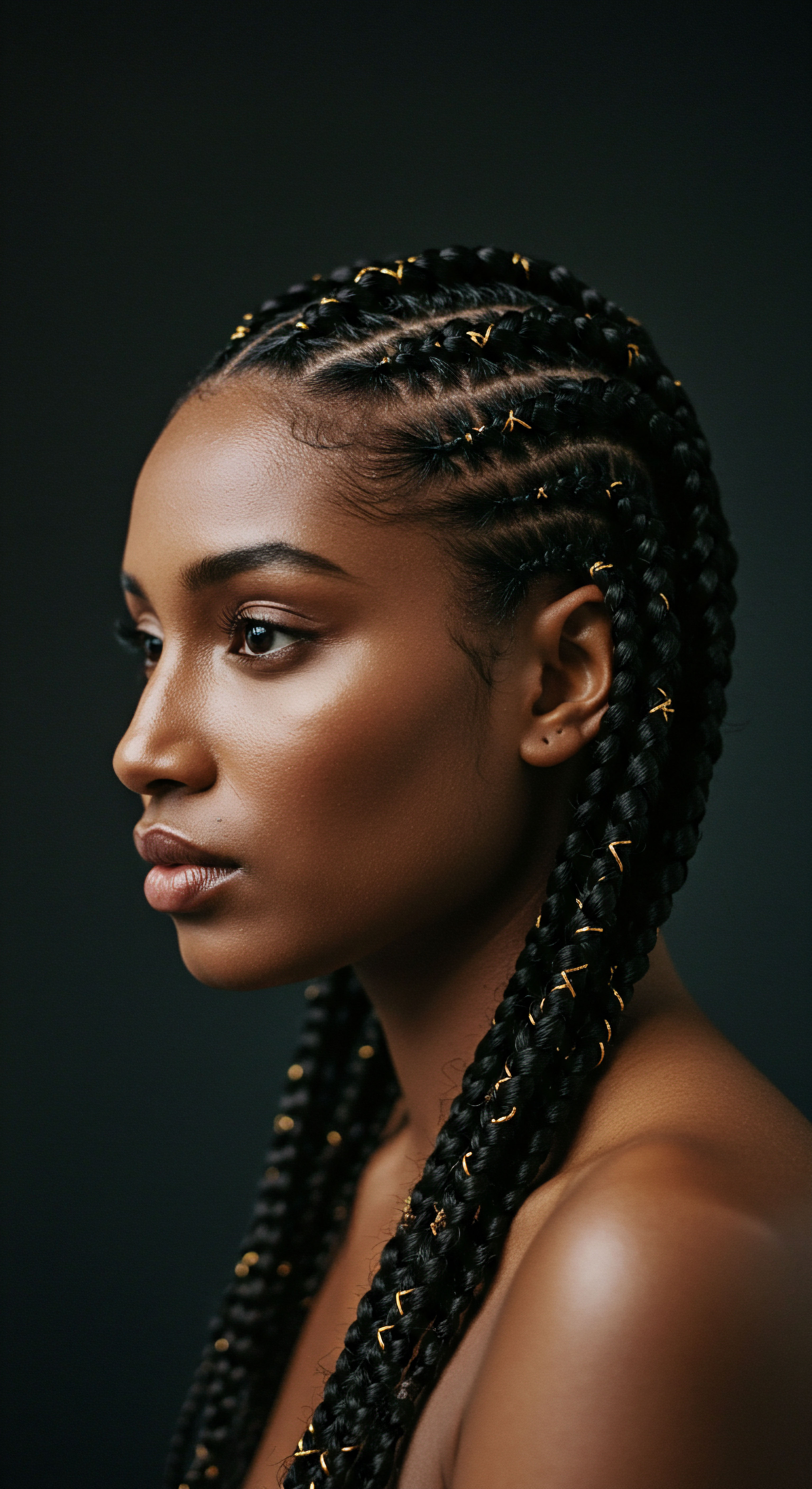
Roots
The story of our hair begins not at its visible surface, but deep within the scalp, in a delicate structure known as the Hair Follicle. For those with textured hair, this journey into understanding is particularly meaningful, as the very architecture of the follicle shapes every curl, coil, and wave. It is here, nestled beneath the skin, that the foundational health of each strand is determined, a silent narrative of growth and resilience unfolding. Grasping the intricate world of the follicle is the first step toward a deeper appreciation of how our styling choices, including braids, truly interact with our biological blueprint.
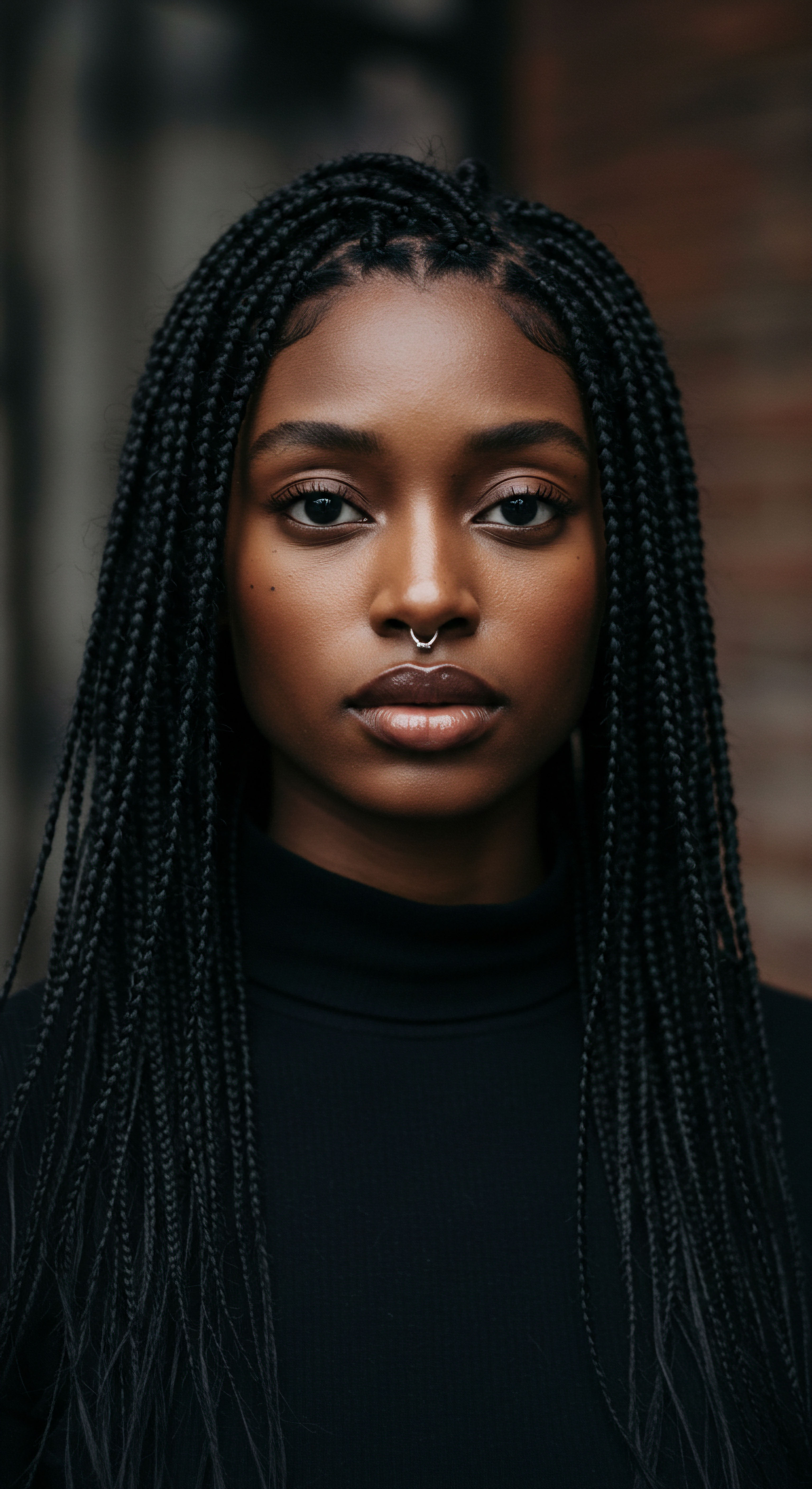
Hair Anatomy and Its Unique Characteristics
Each individual hair shaft sprouts from its own dedicated follicle, a tiny organ with a profound purpose. At the base of this follicle lies the Dermal Papilla, a small, nipple-shaped structure teeming with blood vessels that deliver vital nutrients and oxygen. This papilla acts as the life source for the hair, feeding the rapidly dividing cells in the hair bulb. These cells multiply, pushing upwards, keratinizing as they go, forming the hair strand we see.
Textured hair, distinct in its structure, typically emerges from an elliptical or oval-shaped follicle, rather than the round follicle often found with straight hair. This unique shape imparts the characteristic curl or coil to the hair shaft itself. The hair strand of textured hair also exhibits variations in thickness along its length and possesses a unique S-shaped or helical configuration.
This inherent curvature, coupled with fewer anchoring fibers within the dermis, can predispose these strands to different mechanical stresses compared to straight hair. This anatomical distinction is not a weakness, but a design that demands specific care and understanding.
The health of each hair strand is determined deep within its follicle, a tiny organ that dictates growth and resilience.

The Rhythms of Hair Growth
Hair growth follows a cyclical pattern, a biological rhythm that repeats throughout our lives. This cycle has three primary phases ❉
- Anagen ❉ The active growth phase, where hair cells divide rapidly, and the hair lengthens. This phase can last anywhere from two to seven years, largely determining the maximum length a person’s hair can attain.
- Catagen ❉ A transitional phase, brief in duration, lasting only a few weeks. During this period, hair growth ceases, and the follicle shrinks, preparing for the resting phase.
- Telogen ❉ The resting phase, which typically spans a few months. During this time, the hair remains in the follicle but is no longer actively growing. Towards the end of this phase, the hair is released, and a new anagen hair begins to form, pushing the old one out.
Understanding these cycles is paramount, as chronic external forces, such as excessive tension, can disrupt this natural progression, potentially shortening the anagen phase or prematurely pushing hairs into the telogen phase. When many follicles enter the resting phase too soon, or when the new growth is hindered, thinning or hair loss becomes noticeable.
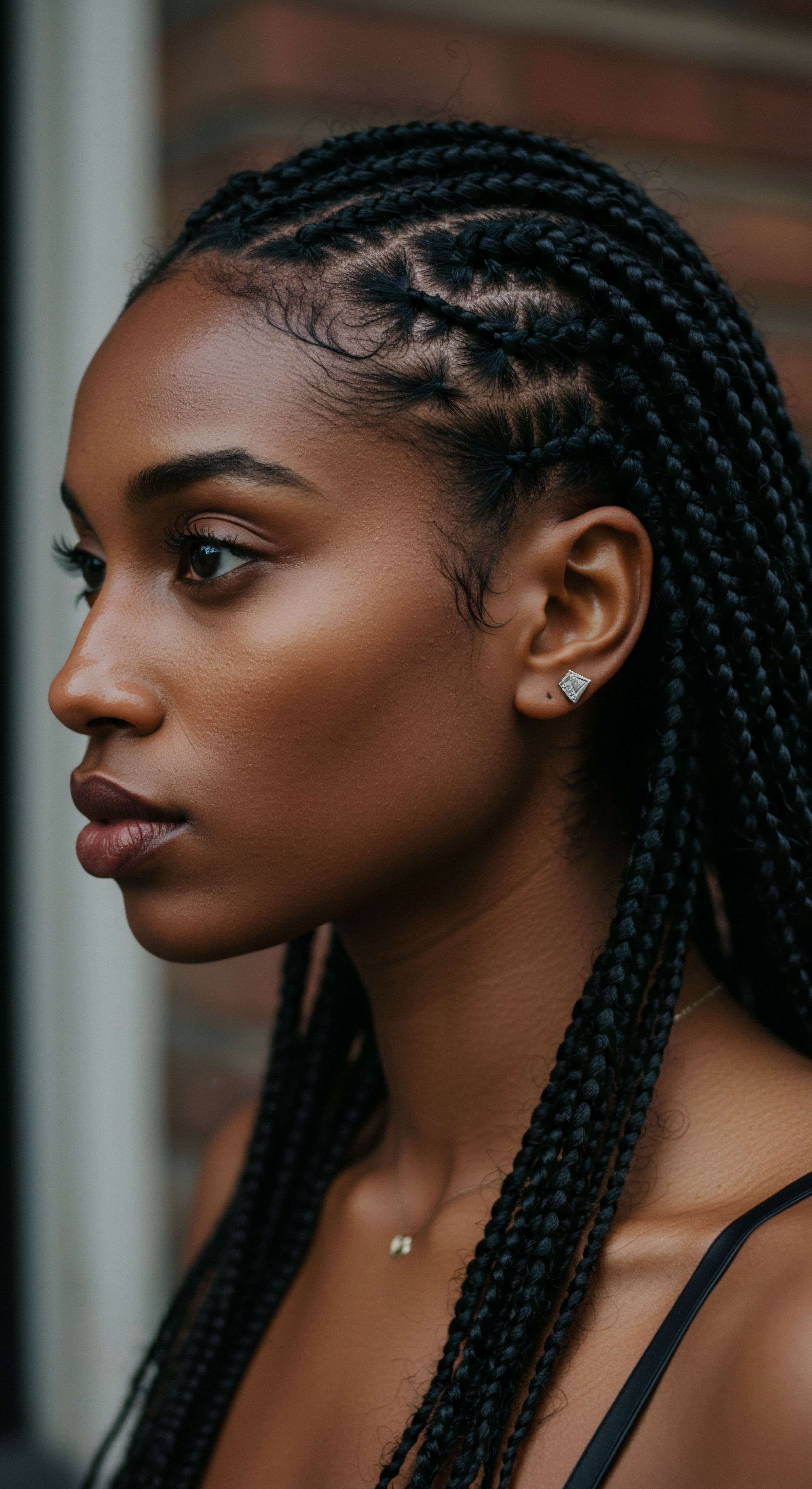
What Happens When a Follicle is Stressed?
A healthy hair follicle is remarkably resilient, capable of enduring daily styling and environmental exposures. Yet, its capacity for strain is not limitless. When a follicle experiences persistent or excessive pulling, as can occur with overly tight braids, it reacts.
This reaction can manifest as inflammation around the follicle, a condition sometimes known as Folliculitis. This initial irritation is the body’s warning signal, indicating that the follicle is under duress.
Continued stress beyond this point can lead to more significant changes. The dermal papilla, the very source of hair growth, can become compromised. The follicle itself might shrink, producing finer, weaker hairs over time. This miniaturization is an early sign of distress, often reversible if the source of tension is removed.
However, if the trauma persists, the body’s healing response can turn against the follicle, replacing healthy hair-producing structures with scar tissue. This irreversible scarring is the point of no return for a follicle, rendering it unable to produce hair again.
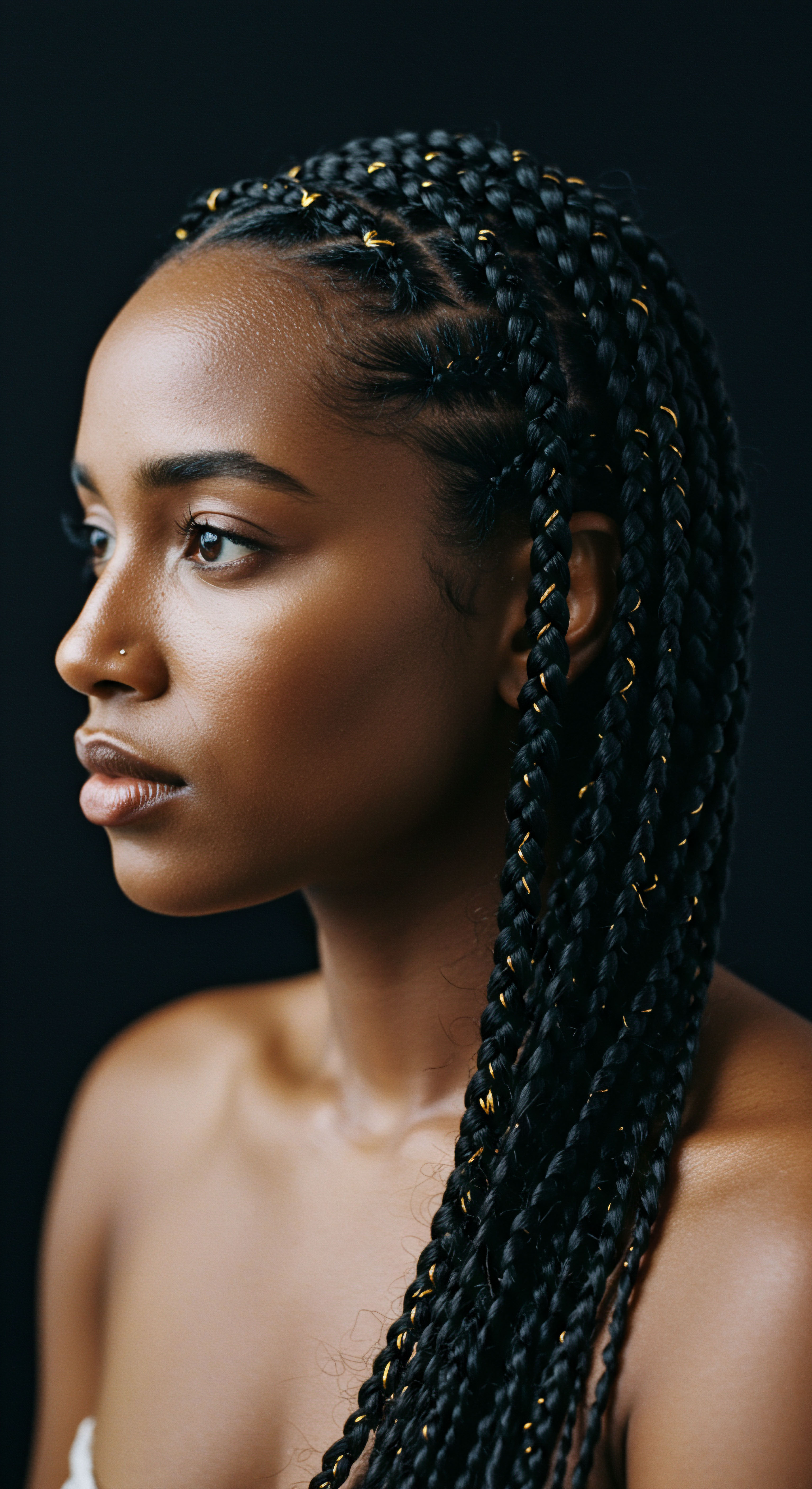
A Foundational Lexicon for Textured Hair Care
Navigating the world of textured hair care calls for a shared language. Here are some terms that ground our understanding of hair health and the impact of styling ❉
- Traction Alopecia ❉ Hair loss resulting from prolonged or repetitive pulling on the hair follicles. It typically appears along the hairline, temples, or nape.
- Cicatricial Alopecia ❉ A group of inflammatory hair loss disorders that cause permanent destruction of the hair follicle and its replacement with scar tissue. Traction alopecia, if left untreated, can progress to this irreversible form.
- Hair Porosity ❉ The hair’s ability to absorb and retain moisture, determined by the state of its outermost layer, the cuticle. This influences how hair responds to products and hydration.
- Hair Density ❉ The number of individual hair strands on a square inch of the scalp. This varies widely among individuals and hair types.
- Strand Diameter ❉ The thickness of an individual hair strand. Textured hair often has varied strand diameters, even on the same head.
These terms serve as guideposts, allowing for precise discussions about care and concern, moving beyond anecdotal observations to a science-backed understanding of hair’s needs.
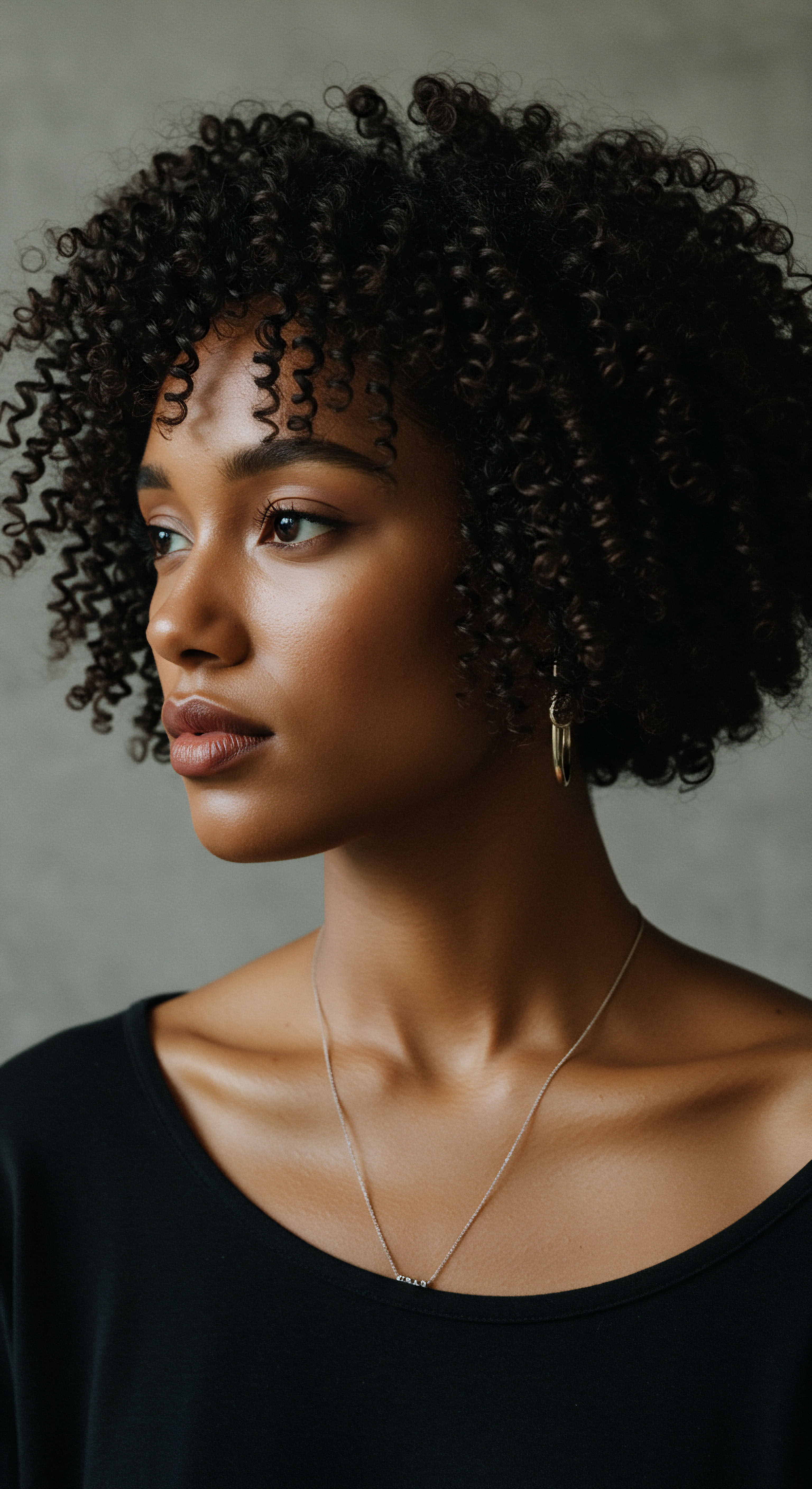
Ritual
Having gained an appreciation for the intricate biology of our hair, our focus now shifts to the deliberate choices we make in its care, particularly the art of braiding. Braids, a cherished cultural practice and a practical styling solution, hold immense protective potential. Yet, as with any powerful ritual, their execution demands mindful consideration.
The intention behind a protective style is to shield delicate strands from environmental stressors and daily manipulation, offering a period of rest and growth. This section explores how to honor that intention, transforming the act of braiding into a truly nurturing experience for your hair and scalp.
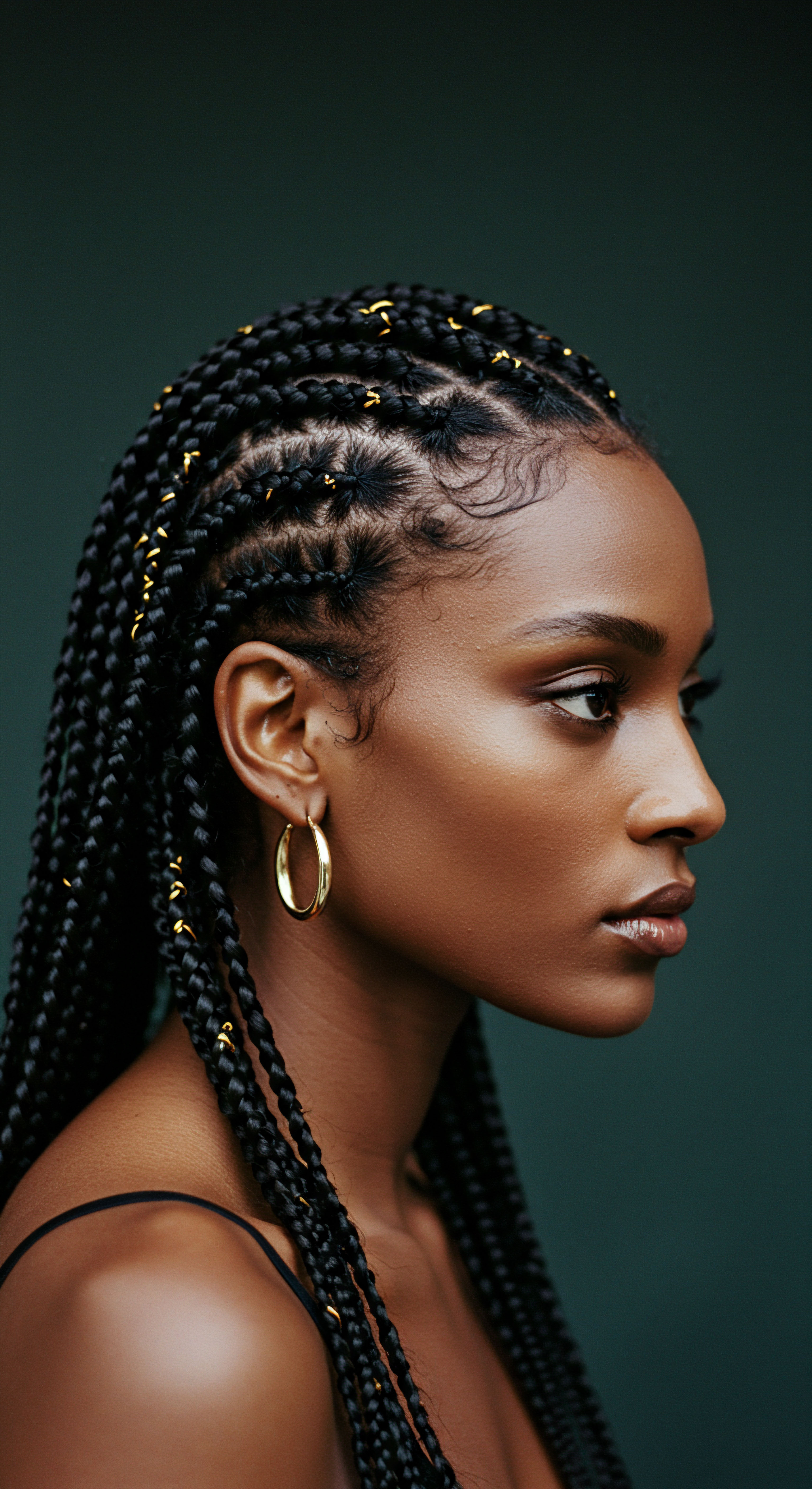
What Makes a Style Truly Protective?
A protective style, at its heart, should minimize stress on the hair and scalp. The elements that define a truly protective style are often overlooked in the pursuit of a sleek or long-lasting look. The critical factors include ❉
- Tension ❉ The amount of pull exerted on the hair roots. Minimal tension is the goal. If a style causes immediate pain, headaches, or bumps around the follicles, it is too tight.
- Weight ❉ The added burden of extensions or braiding hair. Excessive weight can strain the follicles, particularly if the natural hair is fine or has low density.
- Duration ❉ The length of time a style is kept. Even well-installed styles can cause issues if worn for too long, as natural shedding can lead to matting and continued tension on new growth.
The ideal protective style allows the scalp to breathe, the follicles to rest, and the natural hair to remain moisturized and free from undue stress.
A truly protective style minimizes tension, weight, and excessive duration, allowing the hair and scalp a period of genuine rest.
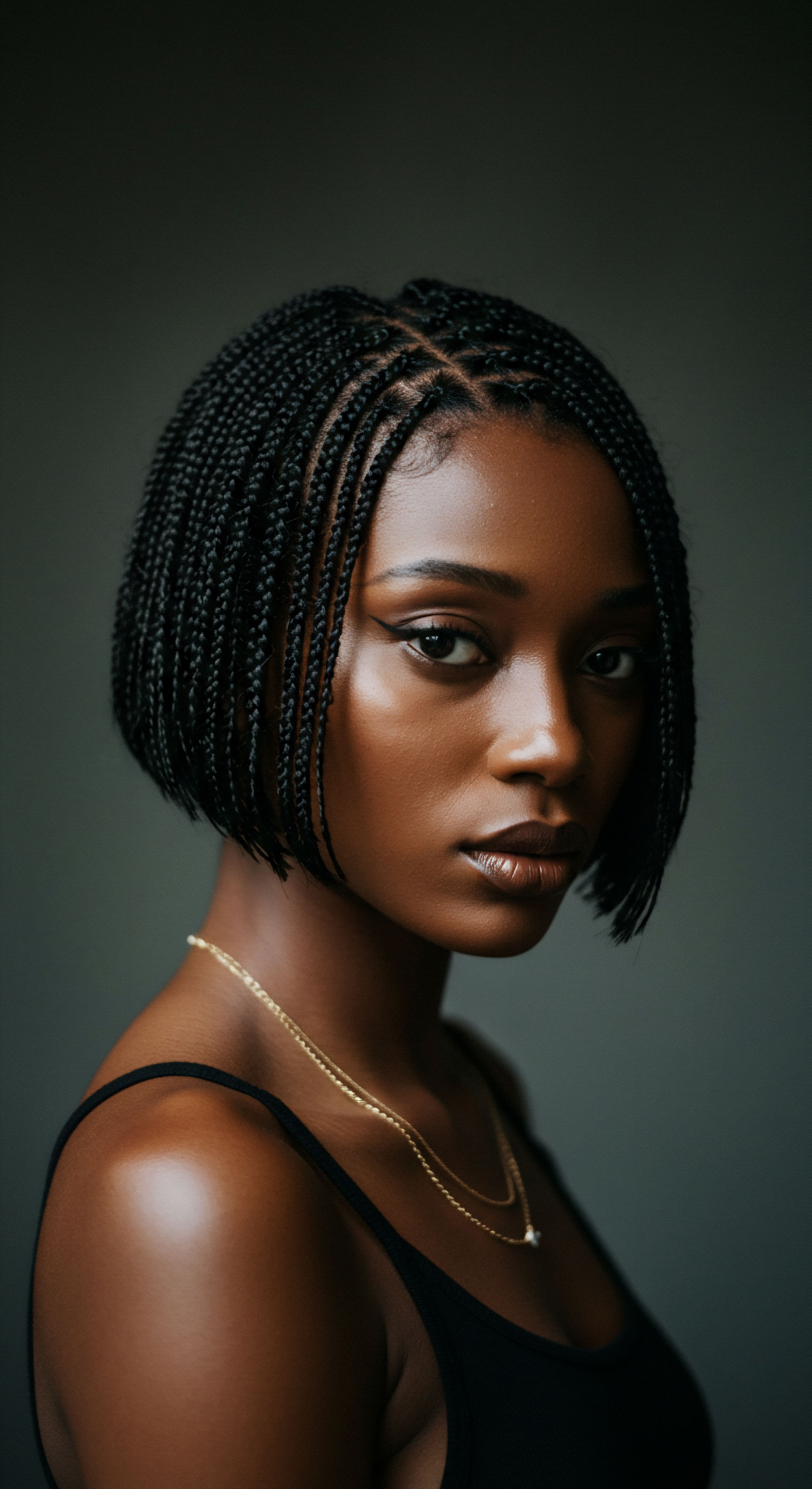
Navigating Braiding’s Potential Pitfalls
While braids offer immense benefits, certain practices can inadvertently undermine their protective purpose. The temptation to achieve an ultra-sleek appearance or to extend the life of a style can lead to methods that stress the hair.
Common pitfalls include ❉
- Excessive Tightness ❉ Braids installed with too much force, particularly around the delicate hairline, can cause immediate discomfort and, over time, significant strain on the follicles. This persistent pulling is a primary contributor to traction alopecia.
- Small Sections with Heavy Extensions ❉ Attaching a large amount of braiding hair to a very small section of natural hair concentrates the weight and tension onto a limited number of follicles, increasing their vulnerability.
- Prolonged Wear ❉ Keeping braids in for many months, especially without proper maintenance, can lead to the accumulation of shed hairs at the root, forming tangles and putting continuous pressure on the hair that is attempting to grow.
Awareness of these common errors empowers us to make more informed choices during the styling process.

What are the Early Signals of Follicle Distress?
The scalp often communicates its discomfort long before visible hair loss appears. Paying close attention to these early signals can prevent long-term damage. Signs of follicle distress often include ❉
- Pain or Tenderness ❉ A feeling of soreness or a dull ache on the scalp, especially around the braided sections, indicates excessive tension.
- Redness or Inflammation ❉ The skin around the base of the braids may appear red or irritated, a visual cue of underlying inflammation.
- Small Bumps or Pustules ❉ These can be a sign of Traction Folliculitis, an inflammation of the hair follicles caused by mechanical stress. While often sterile, these bumps can sometimes become infected.
- Thinning at the Hairline or Temples ❉ A receding hairline or noticeable sparseness around the edges are classic indicators of traction alopecia. This is often accompanied by the presence of smaller, finer hairs, sometimes called the “fringe sign.”
Responding swiftly to these signals by loosening the style or removing it entirely can reverse the early stages of damage.

Care While Braided and Between Styles
The life of a braided style extends beyond its initial installation. Consistent care during the wear period and thoughtful preparation for the next style are both crucial for maintaining hair health.
Proper maintenance includes ❉
- Scalp Cleansing ❉ Regularly cleansing the scalp with a diluted shampoo or specialized scalp cleanser prevents product buildup, dirt, and sebum from accumulating, which can lead to irritation and block follicles.
- Moisturizing ❉ Keeping both the scalp and the braided hair hydrated is essential. Light oils and leave-in conditioners can be applied to prevent dryness and brittleness.
- Nighttime Protection ❉ Wrapping braids in a silk or satin scarf or bonnet minimizes friction and preserves moisture, guarding against breakage and frizz.
- Rest Periods ❉ Allowing the hair to rest and breathe between braided styles is as important as the style itself. A period of at least a few weeks with free-hanging styles or gentle manipulation can give follicles time to recover.
These rituals ensure that the hair remains vibrant and strong, even while enjoying the convenience and beauty of braids.

Do Styling Tools Influence Follicle Health?
The tools employed during braiding play a subtle yet significant role in follicle health. Sharp-edged combs, used aggressively to create parts or detangle, can cause microscopic trauma to the scalp. Applying excessive tension with a comb or during the actual braiding process can also contribute to follicle strain.
Opting for wide-tooth combs for detangling before braiding, and using a gentle hand throughout the styling process, can make a considerable difference. The quality of braiding hair, particularly synthetic types, can also cause friction and potential damage to natural strands over time.

Relay
Our conversation now shifts to a deeper examination, moving beyond the immediate physical interaction of braids with hair to explore the intricate interplay of biology, culture, and personal experience. Can braids truly cause permanent damage to hair follicles? The answer, while often sought as a simple yes or no, reveals a complex landscape where scientific understanding meets lived realities and historical context. It is within this intersection that we find the full scope of how persistent tension can alter the very landscape of the scalp.
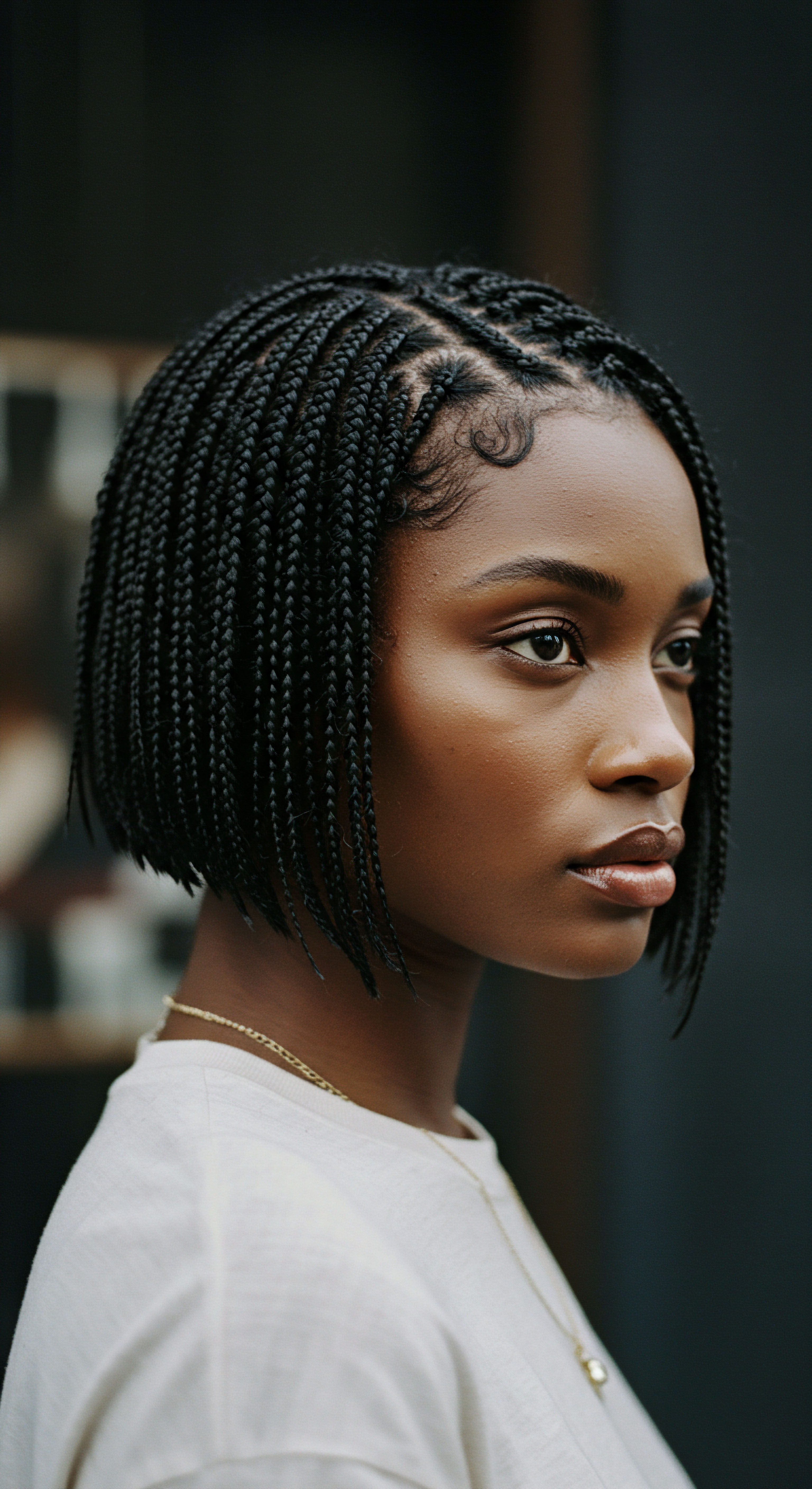
When Does Follicle Damage Become Irreversible?
The journey from temporary follicle distress to permanent hair loss is a gradual one, marked by the body’s response to chronic injury. Initially, excessive tension leads to inflammation around the hair follicle, a condition termed Traction Folliculitis. At this stage, the follicle is irritated but largely intact, and hair loss is typically reversible if the source of tension is removed.
However, if the mechanical stress continues, the inflammation becomes chronic. The body’s natural healing mechanisms, meant to repair tissue, can instead lead to the formation of fibrous scar tissue around the follicle. This process, known as Fibrosis, essentially replaces the hair-producing structures with non-functional scar tissue. Once this scarring occurs, the follicle is destroyed, and its capacity to generate new hair is lost.
This irreversible stage of hair loss is classified as Cicatricial Alopecia, or scarring alopecia. The critical distinction lies in whether the stem cells within the follicle, responsible for regenerating hair, have been irreparably damaged. Early detection and intervention are paramount to prevent progression to this permanent state.
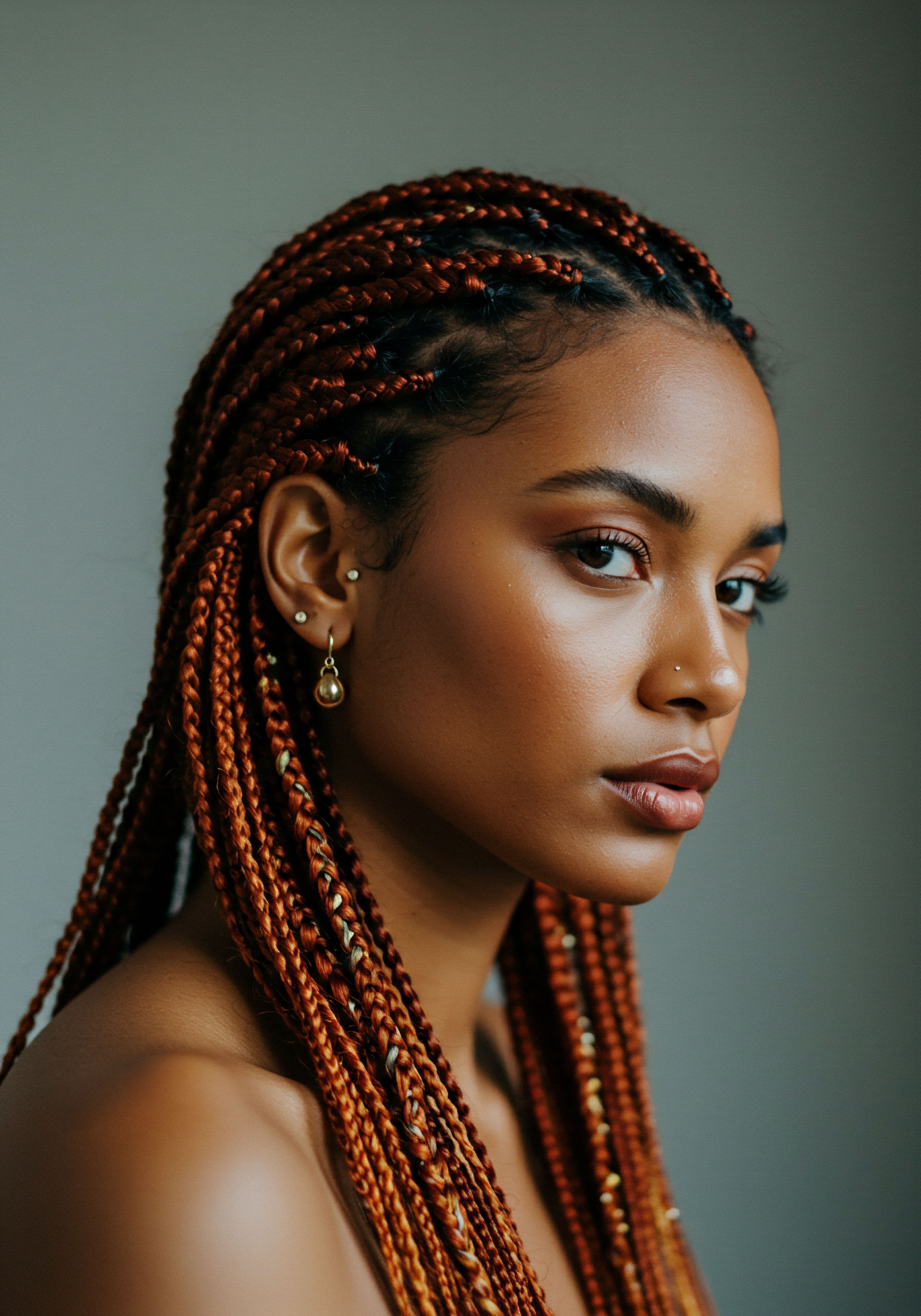
How Prevalent is Traction Alopecia in Certain Populations?
While traction alopecia can affect anyone who wears tight hairstyles, its prevalence is notably higher in communities where braiding and other tension-inducing styles are deeply embedded in cultural practices. This is not a reflection of inherent hair weakness, but rather a consequence of specific styling habits and, in some cases, the unique structural characteristics of textured hair.
Consider the findings from a series of studies conducted by Khumalo and colleagues in South Africa. Their research offers a stark look at the reality of this condition. One study found that 31.7% of Women and 9.4% of Children in South Africa Exhibited Signs of Traction Alopecia. Further analysis showed that the prevalence increased with age, affecting 8.6% of younger girls (ages 6-7) and rising to 21.7% in older girls (ages 17-21).
This data suggests a cumulative effect, where years of consistent tension contribute to the development of the condition. Moreover, these studies revealed that women and children who reported experiencing tight, painful braids were almost twice as likely to have traction alopecia (odds ratio = 1.94, P = 0.004), or “pimples” at the base of their braids (odds ratio = 1.81, P = 0.046). This strong statistical association underscores the direct link between perceived discomfort during styling and subsequent hair loss.
Studies reveal a significant prevalence of traction alopecia in communities with a history of tight braiding, highlighting the cumulative impact of tension on follicle health.
These findings are particularly compelling because they move beyond anecdotal observations, providing quantitative evidence of the widespread impact of styling practices on follicle health within specific populations. The research also points out that while the African hair follicle’s asymmetrical shape might predispose it to greater traction forces, the primary risk factor remains the hair care practices themselves, not the hair type. This distinction is vital for shifting conversations from inherent vulnerability to actionable prevention strategies.
| Population Group South African Women (18-86 years) |
| Prevalence of Traction Alopecia 31.7% |
| Source Khumalo et al. |
| Population Group South African Schoolgirls (6-21 years) |
| Prevalence of Traction Alopecia 17.1% |
| Source Khumalo et al. |
| Population Group South African Younger Girls (6-7 years) |
| Prevalence of Traction Alopecia 8.6% |
| Source Khumalo et al. |
| Population Group South African Older Girls (17-21 years) |
| Prevalence of Traction Alopecia 21.7% |
| Source Khumalo et al. |
| Population Group These figures highlight the significant impact of styling practices on hair health within these demographics. |
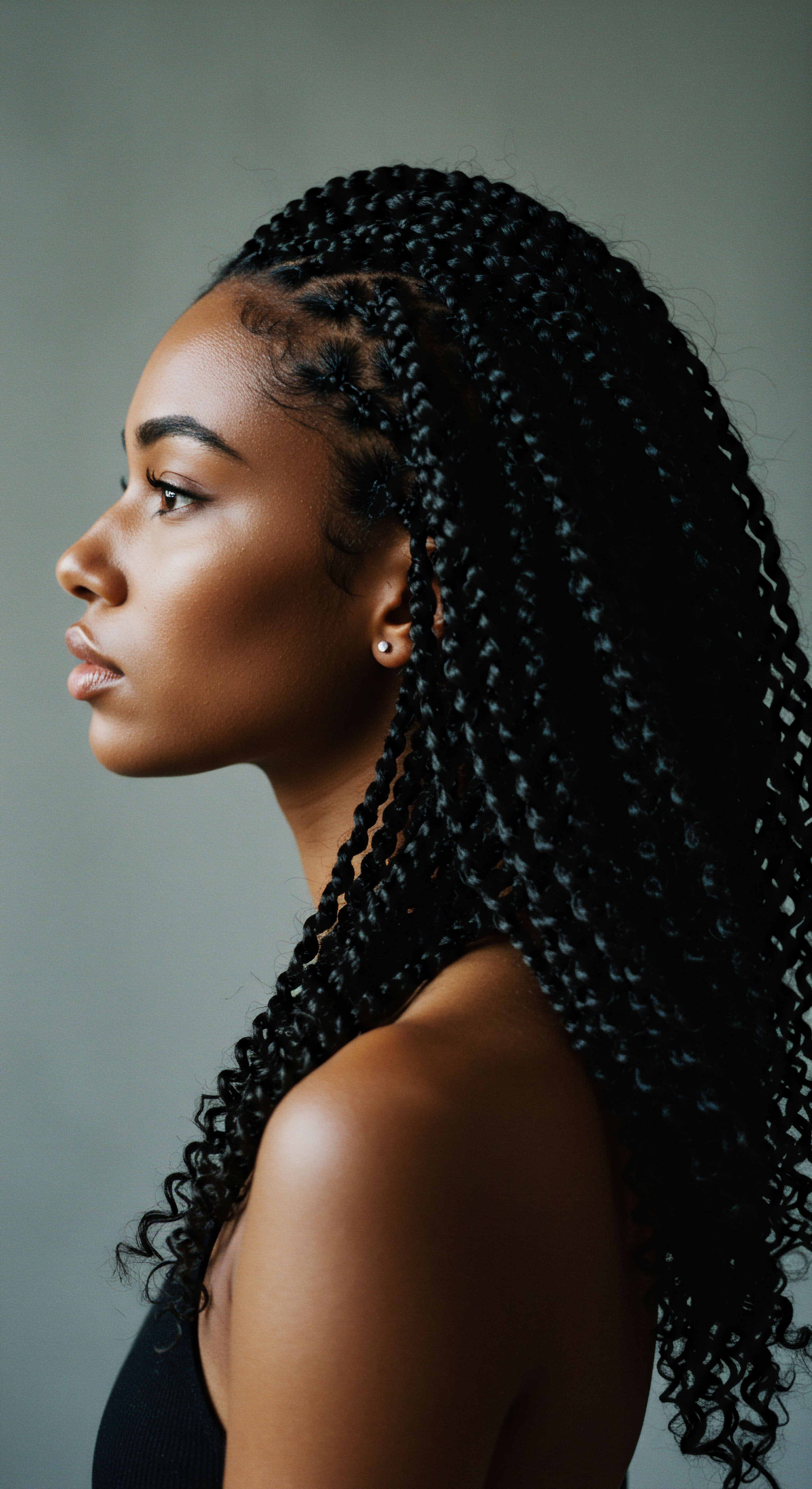
What Cultural Context Shapes Our Hair Choices?
Braids are far more than mere hairstyles; they are living testaments to cultural heritage, personal identity, and community bonds. For centuries, across African civilizations, braided styles communicated a wealth of information ❉ age, marital status, tribal affiliation, social rank, and even religious beliefs. The intricate process of braiding often served as a communal activity, fostering connection and the intergenerational transfer of wisdom.
However, this rich history also carries the weight of colonial legacies and societal pressures. During periods of enslavement and beyond, attempts were made to strip away cultural identity, often targeting hair. This led to a complex relationship with natural hair, where straightened styles were sometimes adopted for survival or perceived professionalism in Western contexts.
Today, while there is a powerful movement celebrating natural hair and protective styles, the underlying societal expectations can still influence choices, sometimes leading individuals to prioritize aesthetics or perceived neatness over scalp comfort and long-term hair health. The desire to maintain a certain look, or to extend a style for convenience, can inadvertently contribute to practices that place follicles at risk.

Beyond the Physical ❉ The Emotional Weight of Hair Loss
Hair loss, particularly in visible areas like the hairline, carries a significant emotional and psychological burden. Hair is deeply intertwined with self-perception, cultural identity, and societal beauty standards. For many, hair loss can lead to feelings of self-consciousness, anxiety, and a decline in overall quality of life.
The emotional impact can be particularly profound when hair loss stems from practices intended to protect or beautify, creating a painful paradox. Recognizing this emotional dimension is crucial for a holistic approach to hair wellness, emphasizing support and self-acceptance alongside physical care.

Can Modern Science Inform Ancient Hair Wisdom?
The enduring wisdom of traditional hair practices, often passed down through generations, finds new depth when viewed through the lens of contemporary trichology. For instance, the practice of scalp oiling, common in many African hair traditions, can be understood scientifically as a means of moisturizing the scalp barrier and reducing inflammation. Similarly, the concept of “resting” hair between styles aligns with the biological need to relieve chronic tension on follicles.
Modern science can offer insights into the optimal duration for styles, the appropriate tension levels, and the best ingredients to support follicle health. By blending ancestral knowledge with scientific understanding, we can refine our hair care practices, ensuring they are not only culturally resonant but also biologically sound. This integration helps us navigate the complexities of hair health with both reverence and precision, moving towards practices that genuinely honor the hair’s resilience.
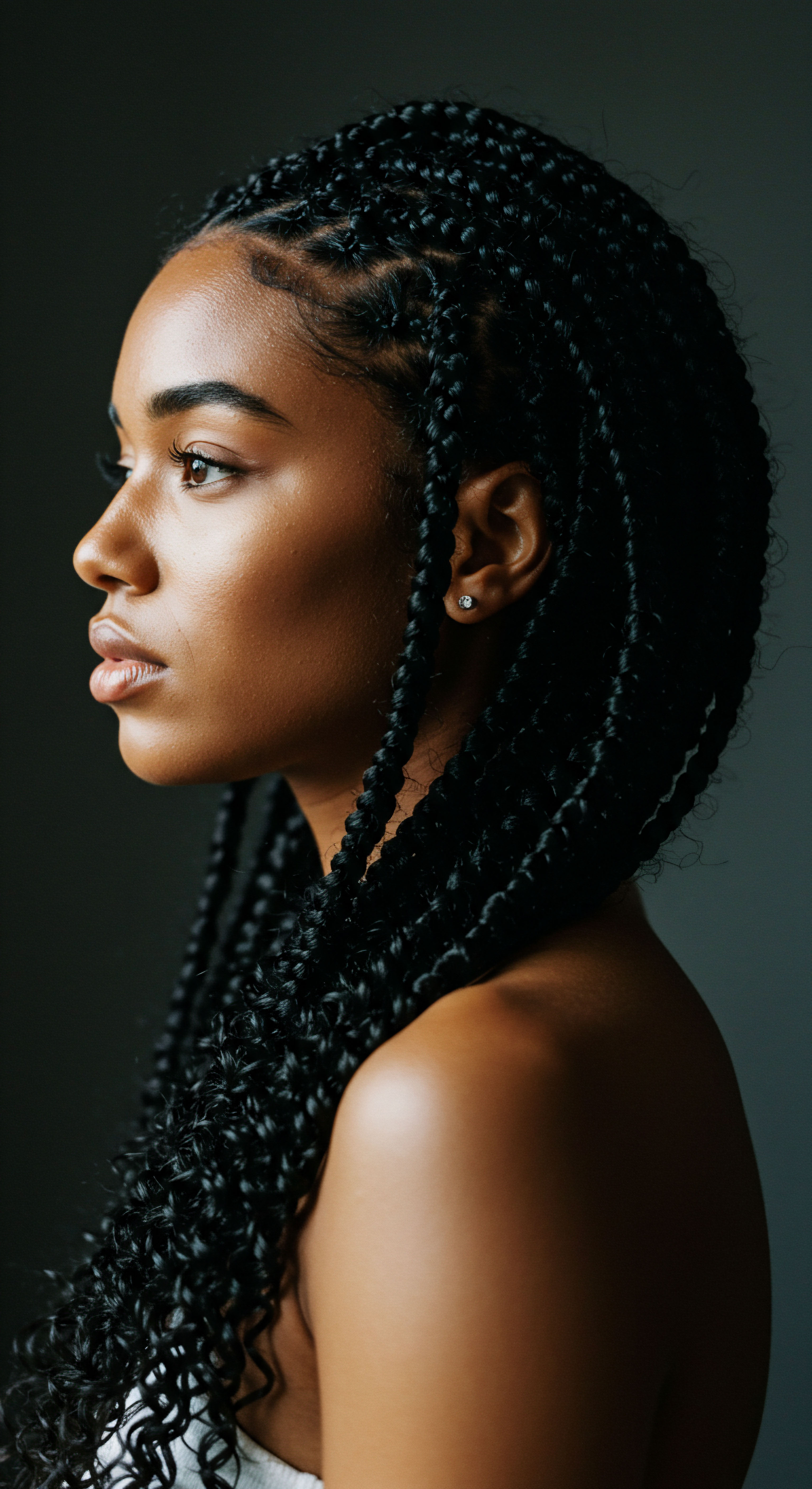
Reflection
The exploration of braids and their potential impact on hair follicles reveals a nuanced truth ❉ the very styles celebrated for their protective qualities can, if not approached with mindful care, become a source of stress for our delicate strands. This journey from the microscopic world of the follicle to the broad strokes of cultural tradition underscores the profound connection between our physical being and our heritage. Understanding this interplay invites us to move beyond simplistic notions of hair care, embracing a holistic perspective that honors both the science of our strands and the stories they tell. Our hair, in all its varied textures, is a testament to resilience, a living crown that deserves our deepest reverence and informed care.

References
- Akingbola, Christiana Oyinlola, and Jui Vyas. “Traction alopecia ❉ A neglected entity in 2017.” Indian Journal of Dermatology, Venereology, and Leprology 83, no. 6 (2017) ❉ 644-649.
- Miteva, Mariya, and Antonella Tosti. “Traction alopecia ❉ the root of the problem.” Clinical Dermatology 36, no. 4 (2018) ❉ 489-499.
- Khumalo, Nonhlanhla P. et al. “Determinants of marginal traction alopecia in African girls and women.” Journal of the American Academy of Dermatology 59, no. 4 (2008) ❉ 604-610.
- Chandrashekar, B. S. and C. Madura. “IADVL Textbook of Trichology.” Jaypee Brothers Medical Publishers, 2018.
- Vasconcelos, Cristiana, et al. “Black women’s hair ❉ the main scalp dermatoses and aesthetic practices in women of African ethnicity.” Anais Brasileiros de Dermatologia 90, no. 6 (2015) ❉ 783-802.
- Johnson, Tabora A. and Teiahsha Bankhead. “Hair It Is ❉ Examining the Experiences of Black Women with Natural Hair.” Open Journal of Social Sciences 2, no. 1 (2014) ❉ 86-100.
- Urbina, F. E. Sudy, and M. Barrios. “Traction folliculitis ❉ 6 cases caused by different types of hairstyles that pull on the hair.” Actas Dermo-Sifiliográficas 100, no. 6 (2009) ❉ 503-506.